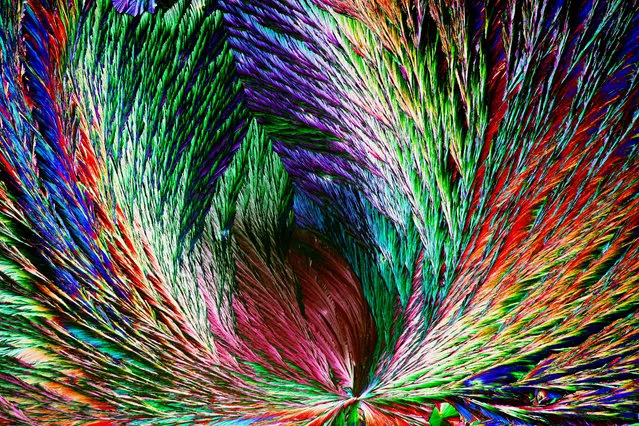
Organic crystals by Henri Koskinen. Taken in Helsinki, Finland. Describe what is pictured? Citric acid in crystal form. Citric acid is a weak organic acid that occurs naturally in citrus fruits. In biochemistry it is an intermediate in the citric acid cycle, which occurs in the metabolism of all aerobic organisms. How does this image fit with the theme of the competition? My image depicts citric acid crystallised on a microscope glass slide. Citric acid is an organic compound that occurs in the metabolism of all aerobic organisms. (Photo by Henri Koskinen/Royal Society of Biology)
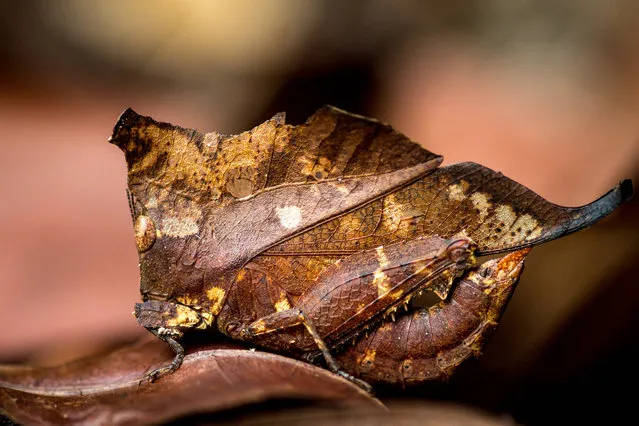
Dead leaf or almost by Guilhem Duvot. Taken in Nován Stráž, Slovakia. Describe what is pictured? A dead leaf grasshopper. How does this image fit with the theme of the competition? The perfect camouflage – nature is amazing. I saw the grasshopper only because it jumped. (Photo by Guilhem Duvot/Royal Society of Biology)

Bouquet de fleurs by Håkan Kvarnström. Taken in Stockholm, Sweden. Describe what is pictured? Dinobryon Divergens is commonly known as golden algae. Measuring about 50 µm in length, it lives in lakes and ponds around the world and forms colonies composed of about six to 50 cells that are surrounded by a vase-like shell of cellulose. How does this image fit with the theme of the competition? It is amazing how such small life forms can be as beautiful as a bouquet of flowers. Microscopic in size, but stunningly beautiful. (Photo by Håkan Kvarnström/Royal Society of Biology)
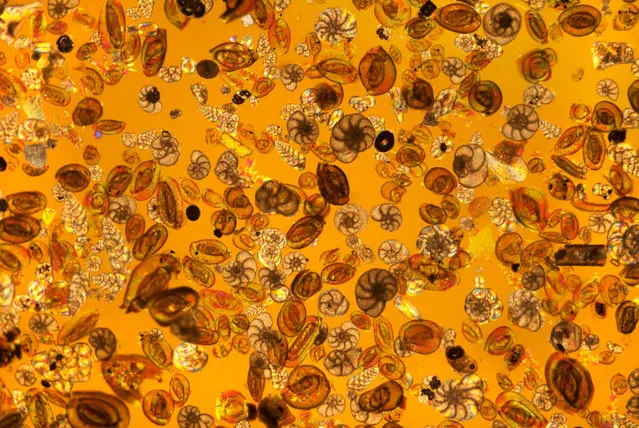
Foraminifera shells by Steve Lowry. Taken in Portstewart, Northern Ireland, UK. Describe what is pictured? A wide variety of foraminifera photographed using polarised light microscopy. Foraminifera are single-celled amoeboid protists. They live within a shell, or test, which is composed of a single chamber or a number of chambers and protoplasm extrudes through holes in the shell to facilitate feeding. How does this image fit with the theme of the competition? Forminifera come in a wide variety of shapes and forms and fit in with the theme of patterns in nature. (Photo by Steve Lowry/Royal Society of Biology)
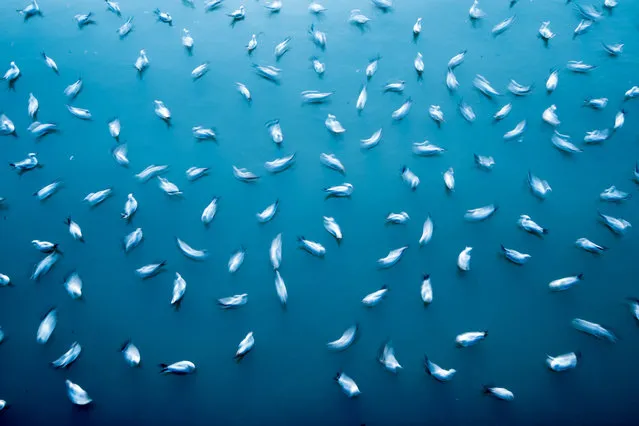
Flock of seagulls by Viraj Ghaisas. Taken in Mumbai, India. Describe what is pictured? I shot this image near the gateway of India. In winter, these birds congregate in several places where the locals have made it a daily ritual to feed them junk food. How does this image fit with the theme of the competition? A slow shutter speed has created an interesting pattern of moving seagulls. (Photo by Viraj Ghaisas/Royal Society of Biology)
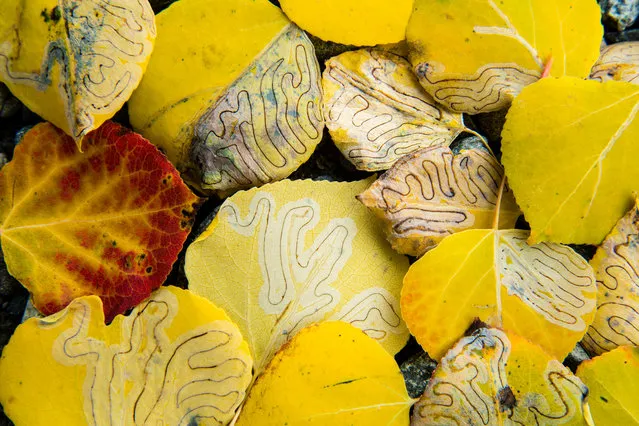
Trails of life by Roberto Bueno. Taken in Whitehorse, Yukon, Canada. Describe what is pictured? The forests of the North are beautiful in autumn. A little larvae is an autumnal surprise in the northern woods of Alaska and Yukon. The feeding behaviour of aspen leaf miner larvae on aspen leaves make interesting patterns, with intricate trails on every leaf. How does this image fit with the theme of the competition? The little trails that these larvae make on the surface of the tree leaves are among the most surprising patterns I have seen in the natural world. (Photo by Roberto Bueno Hernández/Royal Society of Biology)

Nature’s stained glass by Sean Clayton. Taken in Gelston, Scotland, UK. Describe what is pictured? Four-spotted chaser wing detail. How does this image fit with the theme of the competition? Dragonfly wings are incredibly intricate and when viewed close-up I think they contain some of the most beautiful patterns in nature. (Photo by Sean Clayton/Royal Society of Biology)

Suckers on leg of dytiscus beetle by Steve Lowry. Taken in Portstewart, Northern Ireland, UK. Describe what is pictured? Polarised light micrograph of elaborate suckers found on the tarsus of the foreleg of male great diving beetles. They are used to attach the male to the female during mating. How does this image fit with the theme of the competition? The detailed pattern of this elaborate structure is revealed using microscopy. (Photo by Steve Lowry/Royal Society of Biology)
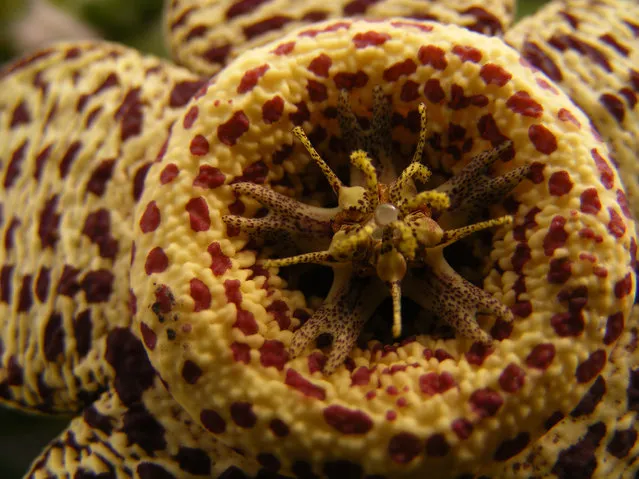
Young Photographer of the Year shortlisted: Spots by Milo Hyde, age 10. Taken in Pirbright, Surrey, UK. Describe what is pictured? Orbea variegata flower. How does this image fit with the theme of the competition? The pattern of spots is all over the flower. (Photo by Milo Hyde/Royal Society of Biology)
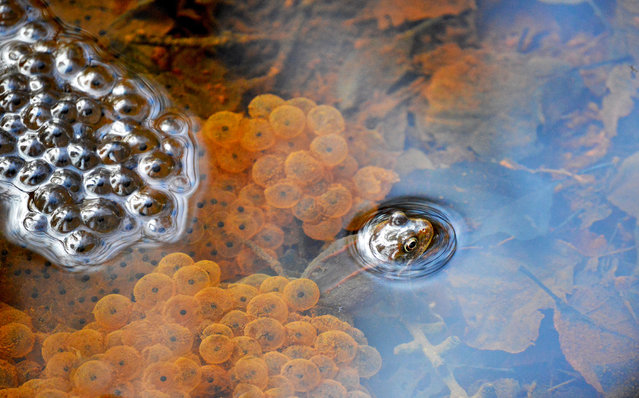
Young Photographer of the Year shortlisted: The natural habitat of a frog by Rebecca Keen, age 17. Taken in a pond surrounding High Dam near Windermere, UK. Describe what is pictured? A frog in its natural habitat surrounded by its spawn. It depicts both the frog spawn on the top of the water and beneath its surface. How does this image fit with the theme of the competition? The first pattern is the clustered arrangement of the frog spawn. The second is the assortment of the leaves beneath the water. The final pattern is the life cycle of the frog itself, from spawn to adult frog. (Photo by Rebecca Keen/Royal Society of Biology)
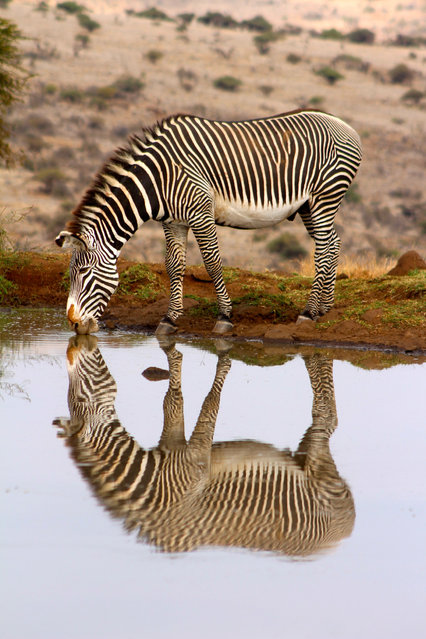
Young Photographer of the Year shortlisted: Stripy reflections by Imogen Smith, age 17. Taken in Lewa Reserve, Kenya. Describe what is pictured? This image shows a zebra having a drink at a watering hole. How does this image fit with the theme of the competition? This image highlights the beautiful striped pattern of the zebra – both the real animal and its reflection. This is a Grevy’s zebra, the most threatened of the three zebra species, characterised by thinner stripes. This photo therefore shows stripes as both a means of camouflage for the animal and a mechanism of identification. (Photo by Imogen Smith/Royal Society of Biology)
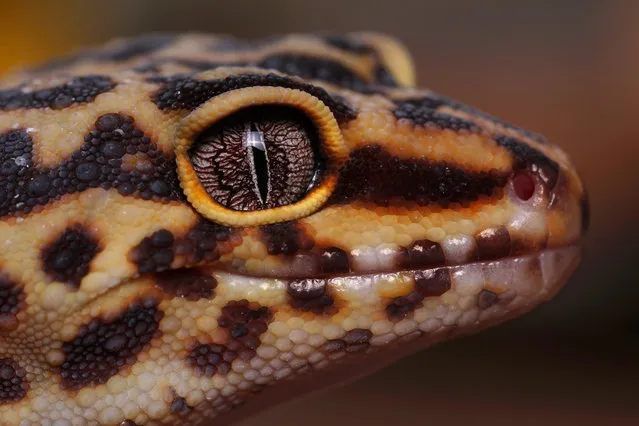
Young Photographer of the Year shortlisted: Leopard gecko by Jack Olive, age 17. Taken in Devon, UK. Describe what is pictured? The leopard gecko stared down the lens allowing me to take this picture. I wanted to show the yellow and black scale pattern as well as the beautiful eye. How does this image fit with the theme of the competition? The array of yellow and black scales contrast brilliantly together and the eye shows magnificent pattern and detail. (Photo by Jack Olive/Royal Society of Biology)
10 Oct 2018 00:05:00,
post received
0 comments
